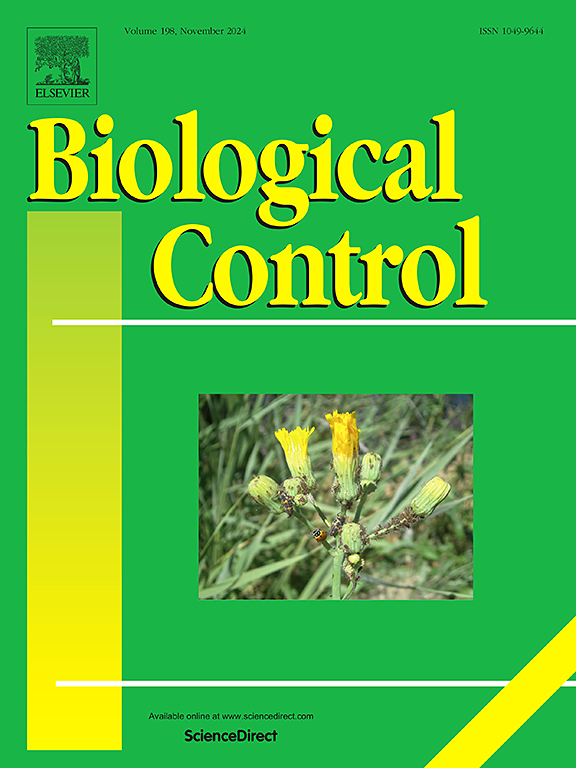Biodegradation of aflatoxin B1 by a novel mined aldo–keto reductase from Meyerozyma guilliermondii AF01
IF 3.7
2区 农林科学
Q2 BIOTECHNOLOGY & APPLIED MICROBIOLOGY
引用次数: 0
Abstract
Biocontrol is an effective technology for managing mycotoxin contamination in food, and the improvement of its application depends largely on revealing the degradation mechanisms at the molecular level. Research in this area is much less than that on the screening of degrading strains. In a previous study, Meyerozyma guilliermondii AF01 was confirmed to exert degradation and adsorption effects on aflatoxin B1 (AFB1). In this study, a potential degradation gene, MG2-4, was mined using a combination of bioinformatics and chemical approaches. The gene was heterologously expressed in Escherichia coli Rosetta DE3, and the recombinant protein, Mg aldo–keto reductase (AKR), reacted with AFB1 in vitro. Moreover, MgAKR rapidly removed AFB1. The degradation product was identified as aflatoxicol using ultra-high-performance liquid chromatography-quadrupole time-of-flight mass spectrometry, which is the same as the degradation product of the AF01 strain. This study reveals that MG2-4 is the key AFB1-degrading enzyme gene in the AF01 strain and lays the foundation for improving AFB1 removal using the AF01 strain.
新发现的一种从吉利mondii Meyerozyma AF01中提取的醛酮还原酶对黄曲霉毒素B1的生物降解
生物防治是控制食品中霉菌毒素污染的有效技术,其应用的改进很大程度上取决于在分子水平上揭示霉菌毒素的降解机制。这方面的研究远远少于降解菌株的筛选。在前人的研究中证实,吉利蒙氏沼菌AF01对黄曲霉毒素B1 (AFB1)具有降解和吸附作用。在这项研究中,利用生物信息学和化学方法的结合,挖掘了一个潜在的降解基因MG2-4。该基因在大肠杆菌Rosetta DE3中异源表达,重组蛋白Mg醛酮还原酶(Mg aldo-keto reductase, AKR)在体外与AFB1反应。此外,MgAKR快速去除AFB1。采用超高效液相色谱-四极杆飞行时间质谱法鉴定其降解产物为黄曲霉毒素,与菌株AF01的降解产物一致。本研究揭示了MG2-4是AF01菌株中关键的AFB1降解酶基因,为提高AF01菌株对AFB1的去除能力奠定了基础。
本文章由计算机程序翻译,如有差异,请以英文原文为准。
求助全文
约1分钟内获得全文
求助全文
来源期刊

Biological Control
生物-昆虫学
CiteScore
7.40
自引率
7.10%
发文量
220
审稿时长
63 days
期刊介绍:
Biological control is an environmentally sound and effective means of reducing or mitigating pests and pest effects through the use of natural enemies. The aim of Biological Control is to promote this science and technology through publication of original research articles and reviews of research and theory. The journal devotes a section to reports on biotechnologies dealing with the elucidation and use of genes or gene products for the enhancement of biological control agents.
The journal encompasses biological control of viral, microbial, nematode, insect, mite, weed, and vertebrate pests in agriculture, aquatic, forest, natural resource, stored product, and urban environments. Biological control of arthropod pests of human and domestic animals is also included. Ecological, molecular, and biotechnological approaches to the understanding of biological control are welcome.
 求助内容:
求助内容: 应助结果提醒方式:
应助结果提醒方式:


